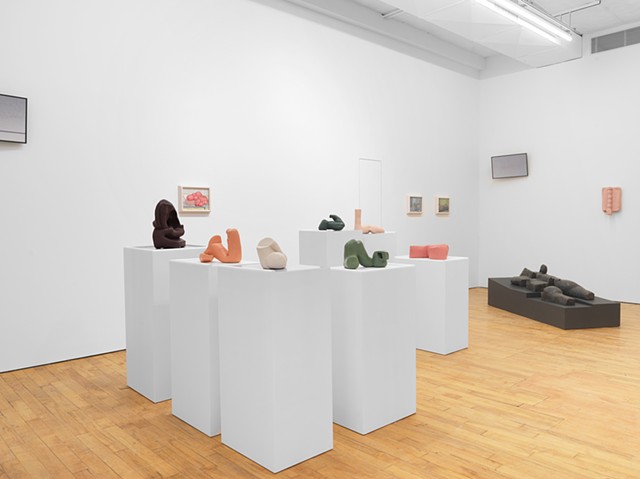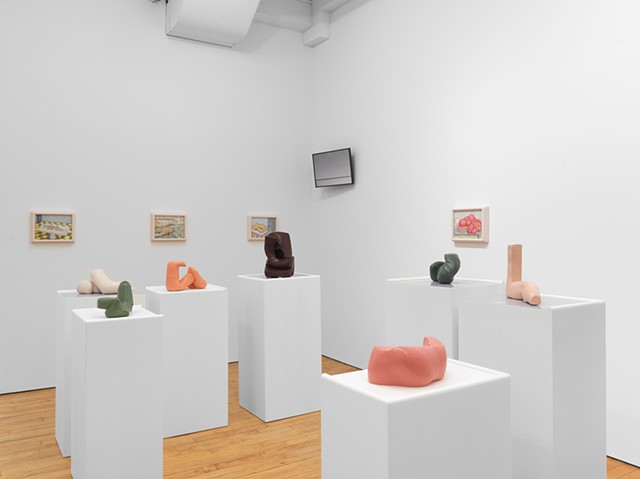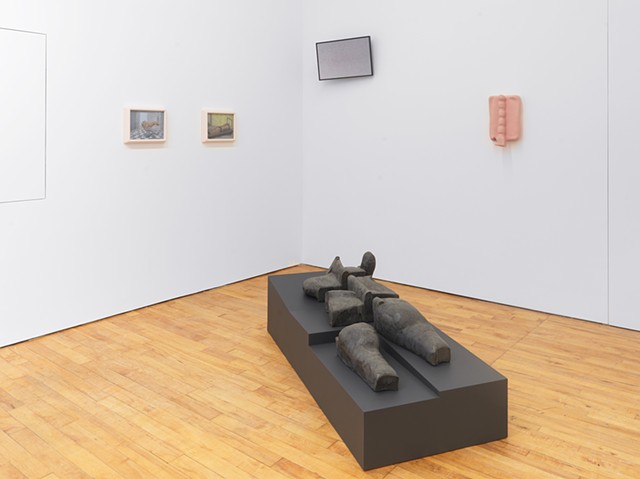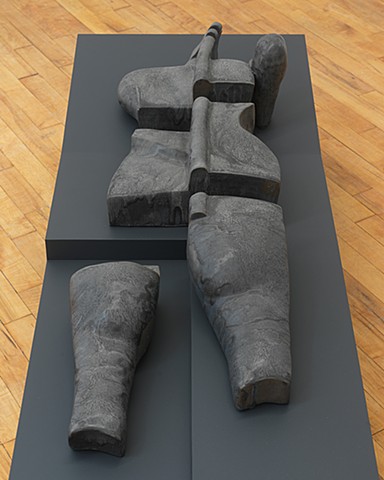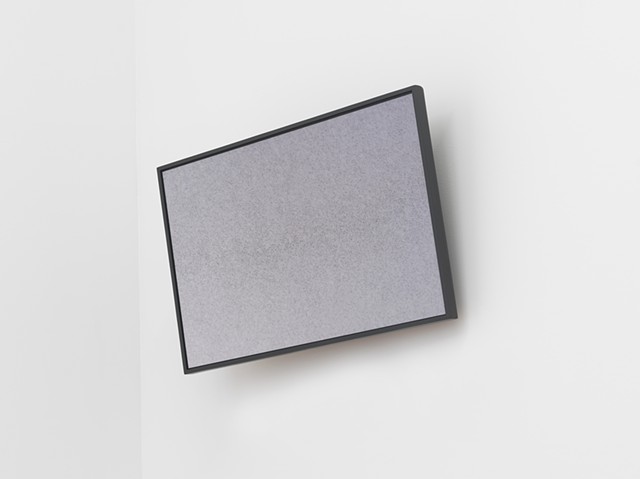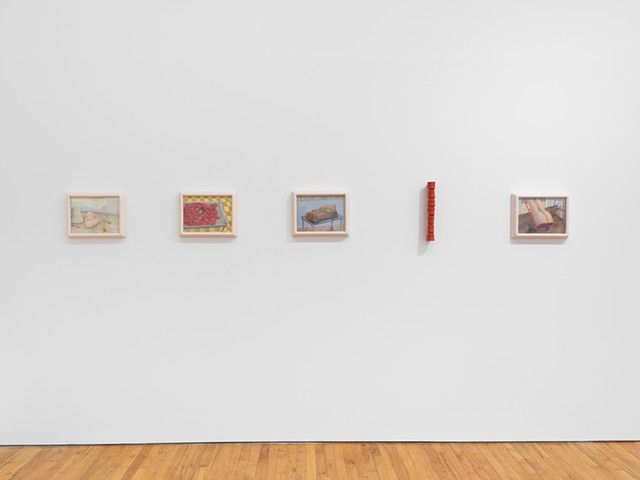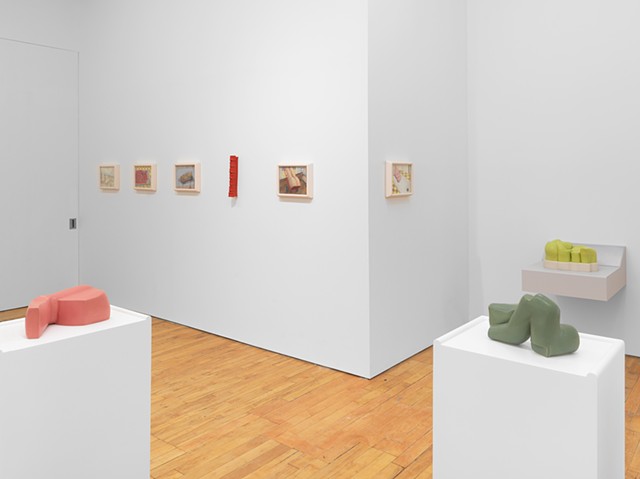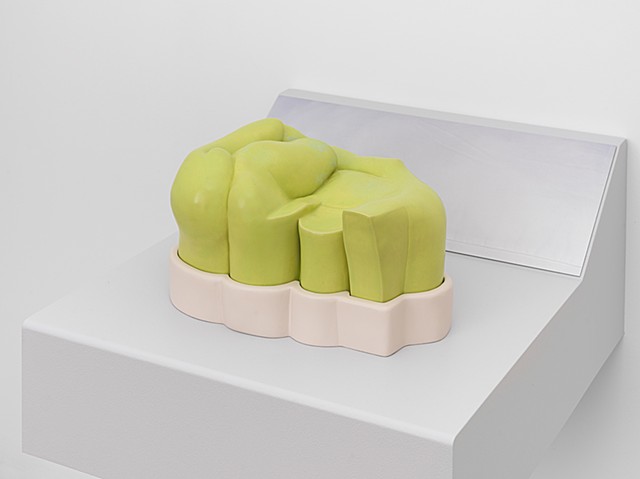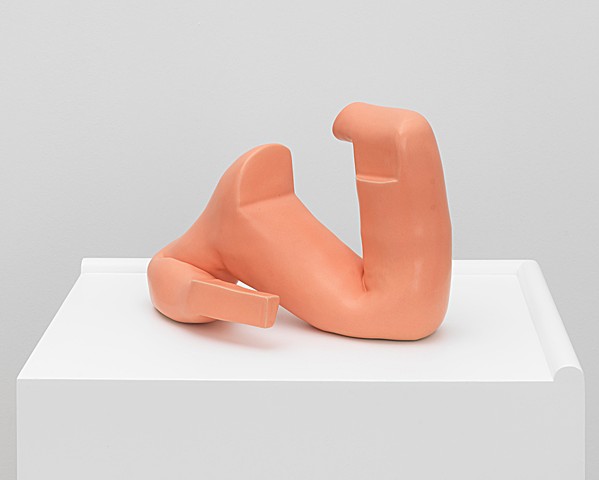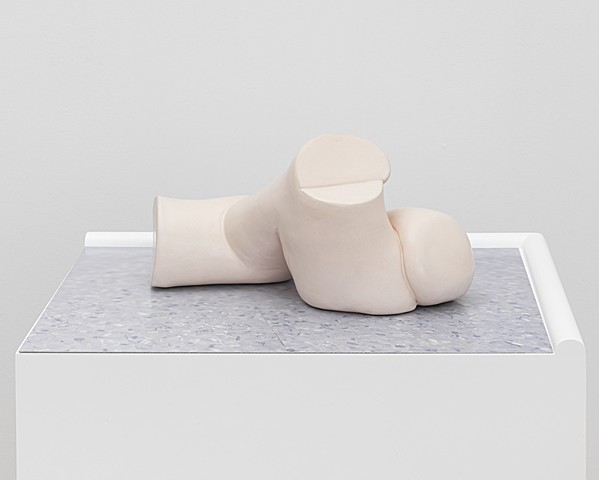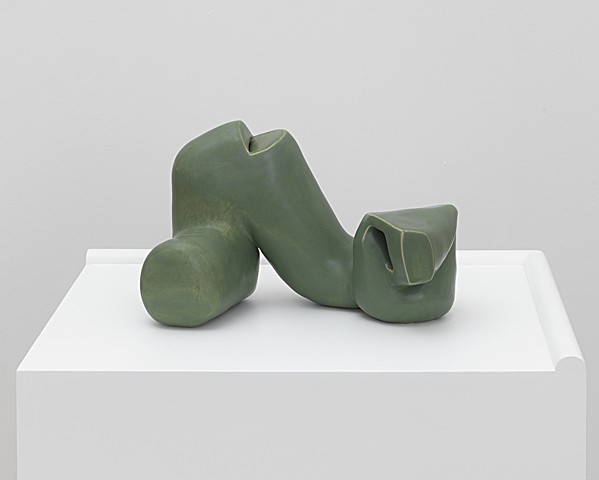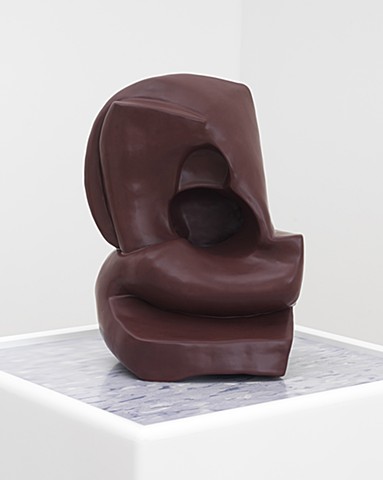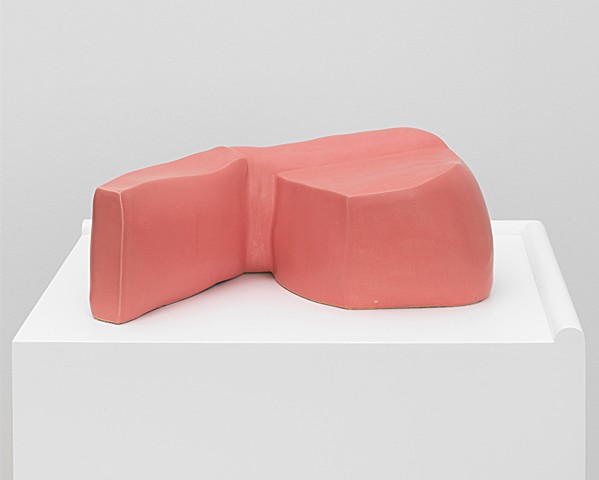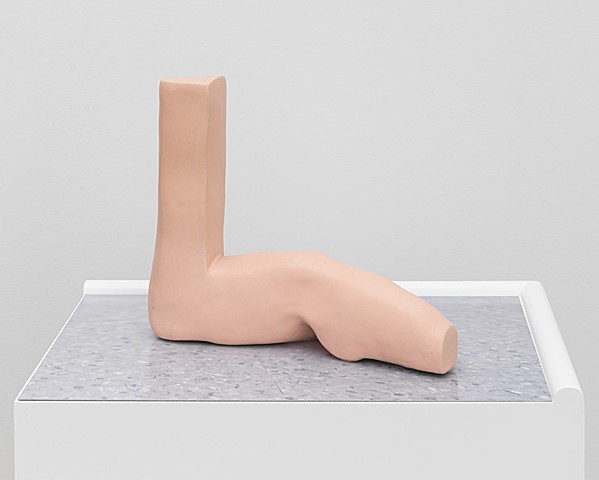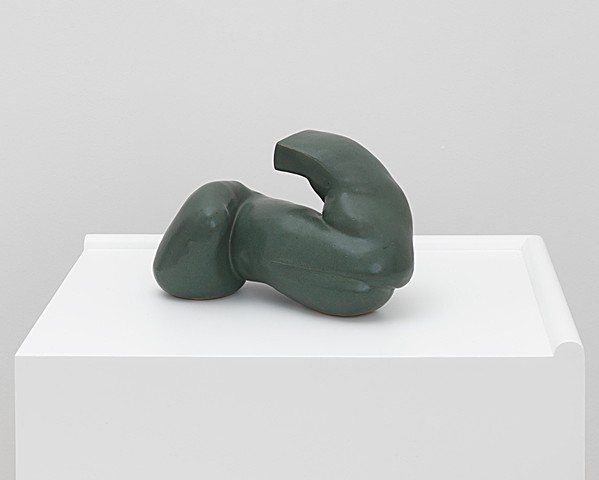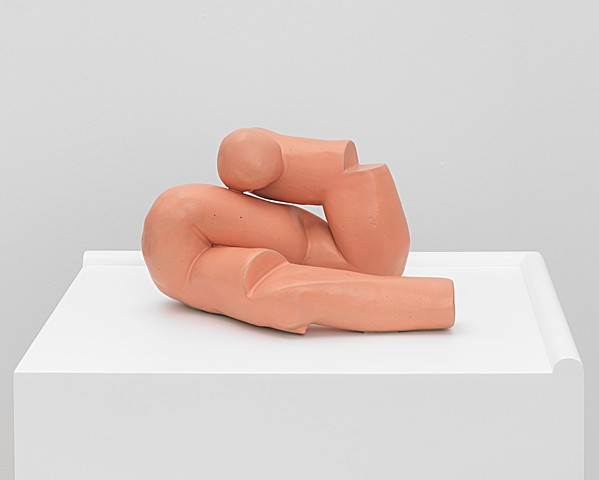Linoleum Spine
Linoleum Spine
Marinaro, NYC
January 22 – February 26, 2022
Linoleum Spine reflects upon the devices of medical intervention, architectures of medical support, and parts of bodies that are the recipients of such intervention. The glazed ceramic forms reveal my lived experience of bodily fragility – like myself, through decades of living with an invisible chronic illness, they inhabit the space between flesh and technology.
My awareness of bodily interiority, integral to my everyday perception of the world, informs each step in my sculptural process. Building forms out of clay, I physically handle my sculptures with equal attention to the inside and outside. I pull parts on the potter’s wheel, stretch and join elements, and methodically smooth surfaces. I conceive of ceramicists' tools as akin to the instruments the doctor or diagnostician uses to examine and alter flesh. The pedestals and frames in this body of work take their cues from hospitals and treatment centers, drawing from the aesthetics of hospital furniture and medical surfaces. I hope that the relationship between the artwork and its support reflect an active symbiosis that compels the viewer to think through the odd and astonishing ways in which bodies are supported and sustained, and the strangeness of surviving at all.
